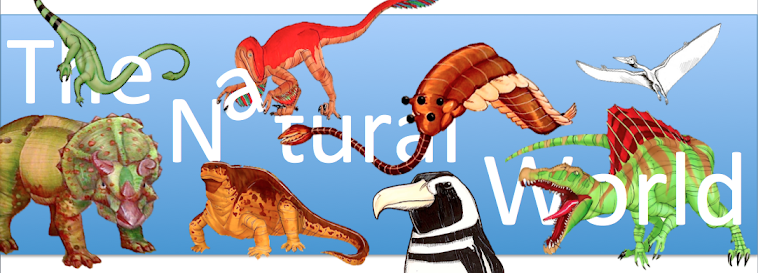Stegosaurus is a very famous
dinosaurs, one of the most famous, along with
Triceratops and
Tyrannosaurus. All three of these dinosaurs have been found in Colorado; in fact, the first
Triceratops bones were actually found in Denver, and
Stegosaurus is the state dinosaur of
Colorado!
Stegosaurus has also been found in
Wyoming and
Utah, in the
Morrison Formation, as well as in
Portugal. The row of plates along its back make it very interesting looking, as do the spikes on the end of its tail, nicknamed a "
thagomizer." Holes in the vertebrae of a potential predator of
Stegosaurus,
Allosaurus, fit exactly with the size of one of the spikes on the tail of the
Stegosaurus, showing that there was almost certainly a predator-prey relationship between the two, as was previously suspected. Studies have shown that the tail end of
Kentrosaurus, a close relative of
Stegosaurus, also with a thagomizer on its tail, could have been brought around to the side of the dinosaur, potentially swatting at enemies trying to attack the Stegosaur from the side.
Finally, discoveries of articulated Stegosaurus skeletons show that the spikes were actually horizontal from the ground, as opposed to held at an angle, as you can see in the outdated and incorrect picture below.
It's an interesting word, though, isn't it: "thagomizer." It certainly doesn't sound like a very sciency name; in fact, when I first heard it, I immediately thought it sounded like something out of one of my favorite comic strips, Calvin and Hobbes, by Bill Watterson. Well, if you thought that as well, then you were actually surprisingly close to the mark, as the term did in fact come from a comic strip, another one of my favorites:
The Far Side.
The term wasn't used scientifically until the year 1993, at the annual meeting of the Society of Vertebrate Paleontology, by the one-time Curator of Paleontology at the
Denver Museum of Nature and Science Ken Carpenter. The name has been used multiple times since then, in different mediums; books and television shows (including another personal favorite,
BBC's Planet Dinosaur), as well as places such as the Smithsonian Institution and Dinosaur National Monument. Although an informal name, it is popular, and has amusing origins.
Gary Larson created a great number of hilarious The Far Side cartoons covering all sorts of topics. However, it seems like a large number of them featured animals, or were in some way nature related. You will undoubtedly see a great many of them in this blog as time goes on, but here are a few other amusing dinosaur ones.




























